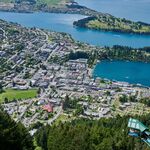vic
Senior Member
Like on Russian soil? Is that not an expansion of the theatre?

Russia accuses Ukraine of helicopter strikes on fuel depot in Russian territory | CNN
Russia accused Ukraine of mounting a helicopter attack on a fuel depot inside Russian territory Friday, as footage surfaced of the facility engulfed in flames.
Russia blames Ukraine. Ukraine won't confirm or deny it.




